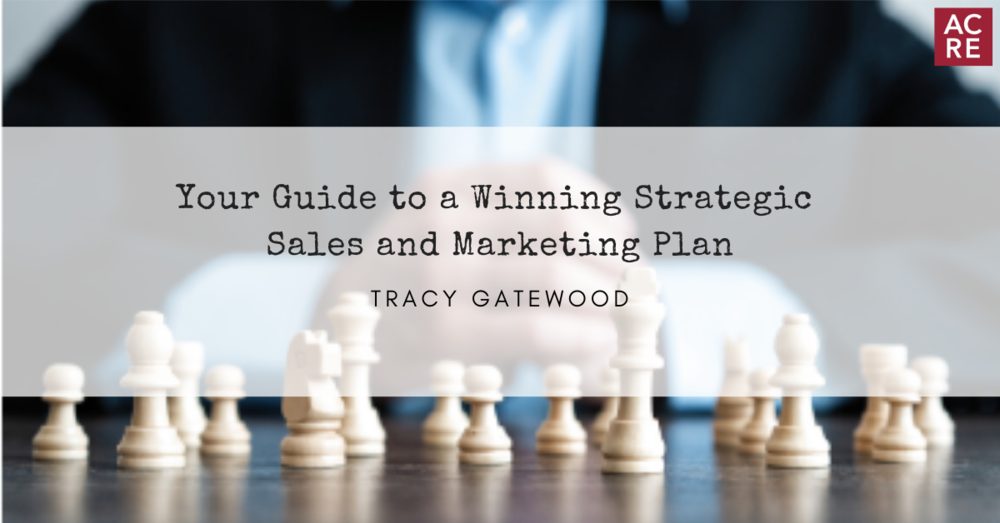Do you have a good sales and marketing plan? A plan that can light the way in the dark corners of competing priorities, lost revenue, and waning brand awareness? When followed, these plans have proven to be a valuable lighthouse in an ocean of possibilities. Bad strategy can destroy a company quickly while having no strategy may be preferable to sending a company off the cliff through judgment errors and poorly advised directives. A bad strategy is every executive’s nightmare.
The word Strategy is derived from the Greek word ‘strategos’ which means ‘General’. References to Strategic thinking and writing were first used in reference to wars and the need for a nation to defeat its enemies. Roman historians later introduced the word ‘strategia’ to refer to territories under the control of a strategus, or a Commander. The word Tactics is also from the Greeks meaning ‘order’ and literally the ordering of formations on a field of battle.

Kenichi Ohmae, acclaimed Japanese business strategist and author of The Mind of the Strategist, has said that the sole purpose of a strategy is to enable a company to gain, as efficiently as possible, a sustainable edge over its competitors. When no competition exists, there is no need to strategize.
Clearly there is fierce competition in the marketplace which may become more intense as companies fight to maintain market share in a post-pandemic economy.
A strategic plan is typically written from the vantage point of one, three, or even five years representing a focused plan of action that is written to achieve company goals and objectives. Because of the dramatic market changes occurring within today’s economy, writing a plan from a twelve to eighteen-month perspective would be acceptable. Good visionary leaders always look at the horizon, projecting some ten to twenty years out.
Under the current economy, a realistic approach would be to plan from a shorter timeframe, even at the expense of a frustrated visionary.

Writing a valuable strategic marketing plan can take approximately two to three months. This template can be retrofitted for use as a company crisis planning tool ‘as is’ and immediately. The objective of this article is to write a sales and marketing related strategic plan and not a crisis objective but the template can be the same. The following are the preparatory steps required for writing an effective strategic sales and marketing plan:
LAYING THE FOUNDATION
1) Interview key departmental team members.
Ask key team leaders to provide an authentic assessment of the key challenges through their department’s lens. Key players should be interviewed that are executing programs and performing tasks at a tactical as well as strategic level. From these interviews, a key challenge will be derived that restrains your company from achieving its full growth and potential.
[ Interviews: Est. Four weeks]
2) Research of local market competitors.
Every company in a market has a niche. Explore and document comparable company websites, social media, and print collaterals to gain a clear understanding of your market competition and how they conduct business. This is not for the purpose of replication, but to gain additional understanding of how your company is different. Your goal is to seek to understand how to further differentiate your company from the rest of the pack and understand your advantage.
[ Research of market competitors: Est. Two to three weeks]
3) One-on-one meetings with elite industry leaders. Research best practices.
In this phase, the writer will engage in one on one in-depth interviews with industry experts. Your plan’s objectives and tactics will be gleaned from these discussions. Most interview questions should relate back to the challenges that have been identified by team members.
[ One on one meetings: Four to six weeks – typically require travel and advance notice. Meetings with a minimum of four industry leaders are recommended.]
THE BASICS
The opening of your plan should begin with a factual summary of your organization. Prepare this section as if you were writing content for your website and it is being read by people that have no knowledge of your organization – Who is X company; followed by a description of the market area served including population, biggest employers, economic base.
Armed with information from the previous three steps you now have the following identified: Key Issues / Objective / Strategy / Tactics.
- Key Issues / Challenges impacting sales and revenue growth and brand awareness. (An organization can have three to seven key issues.)
The more issues identified; the more tactics required to solve these challenges. Tactics = Expenses. The resources of people, time, and capital required to properly execute a plan.
[ PRO TIP Key Issue: Offer no more than five Challenges/ Key Issues for a strategic plan and four is acceptable.]
Each Key Issue details at least one paragraph of why this challenge is restraining company growth and profitability; lack of adequate staff, need for training, lack of money budgeted for research, a lack of donors or partners, lack of adequate space to grow, all of these and more can be categorized as challenges.
Each Key issue is stated as a fact, then stated as a question, then as a goal. For the purposes of illustrating format, a trade show company is used in this example:
#1 Key Issue / Challenge
Utilization of the current facility as an exhibit hall.
How do we maximize the available space of the exhibit hall for the purposes of increasing revenue?
Goal: To create attractive, sought-after exhibit space, while increasing floor space, revenue, and exhibitor opportunity.
The Enchanted Tradeshow Company has a large amount of square footage currently being underutilized. The former use of this square footage was to house display units, temporary exhibitor booths, and maintenance related items that have been moved to offsite storage. There are currently up to 30,000 square feet available for re-purposing and revenue creation. For the past five years, there has been an increase in the number of exhibitors creating a lack of available exhibit space in the original building. The proper re-purposing of this space allows for a dynamic and innovative new hall that will breathe new life and energy into upcoming markets.
[ PRO TIP: Objective An objective always begins with To – and is an action statement:
To Create, To Increase, To Provide, etc. Your objective is simply what you want to accomplish.]
2) Objective: To attract influential, revenue-producing exhibitors to the new hall which should be representative of the standard of the overall complex.
3) Strategy: Hire contemporary designers to create innovative, modern spaces that foster superior exhibitor and buyer experience. Call prospective exhibitors to gauge interest and solicit insights into what they want to see in the new exhibit hall. Work with buyer services and request upgraded service installations, when requested.
[PRO TIP: Tactics There should be at least seven to nine tactics. Ensure the organization can and will execute the tactic before committing it to the plan. Set a time limit on the completion of all tactics and include the results of these efforts at a consistent time to ensure accountability.]
4) Tactics: These are the actual steps required to create solutions to eliminate the key issue or challenge. The tactics are the most important part of your plan, representing the rocks in the roaring stream on which you step to get across to the other side. The tactics represent the company strategic planning ‘ground game’ and will be derived, in part, from the interviews with elite industry leaders and learning their best practices. Other tactics may come from collaborative sessions with your own company.
The following is a list of tactical steps that target the Key Issue of maximizing re-purposed space into a new exhibit hall for the wholesale and retail industry.
- Install high-end concierge booths on each floor and staff with trained concierges to work all hours of every show. Create a spreadsheet to document the number of people assisted, types of questions asked, etc.
- Install charging stations every 200 feet for exhibitors and buyers.
- Drive additional traffic during shows through a loyalty program or other type of program that awards for multiple visits. Provide a prize to the winner of most visits. Document results.
- Discount the first ninety days of rent and provide free employee parking for every new exhibit manager to accelerate and incentive commitments to the new hall.
- Set up Express Registration to encourage buyers to use this exhibit hall for ease of registration.
- Promote a new exhibit hall twice per week for the next four months through all social media channels. Promote new exhibitors, allowing them to tell their brand stories on Instagram IG, and other video outlets.
PLANNING SUMMARY
Your team research has culminated in four to five Key Issues that are restraining your company’s growth, brand awareness, and bottom line.
Each key issue is stated as a factual statement, then a question, then a stated goal.
The objective statement – what you want to accomplish – then a strategic statement is drafted.
Finally, seven to nine tactics are chosen for execution for each key issue.
Upon completing all tactics, a thorough review is needed to assess the success of the tactical execution. What impact did these tactics have on eliminating or improving the key issue of which they were assigned? Following each tactical execution, your results should be measurable. Once you have completed all tactics, it is time for a thorough review and assessment of the initial company challenge. Has the challenge been noticeably diminished or even eliminated?
Following a well-crafted strategic plan should yield noticeable results in revenue increases and brand awareness, with a bonus of a re-energized team that feels more in control of the company’s destiny and bottom line.
—
Tracy Gatewood is an ICSC MAXI award-winning marketing and public relations professional with a concentration on retail real estate. She has written successful strategic plans for non-profit and for-profit entities. Miss Gatewood is acting broker/owner of Gatewood Retail Real Estate, a commercial real estate advisory based in Alabama. For contact information, please visit her website: www.gatewoodretail.com





